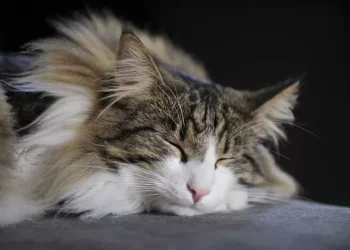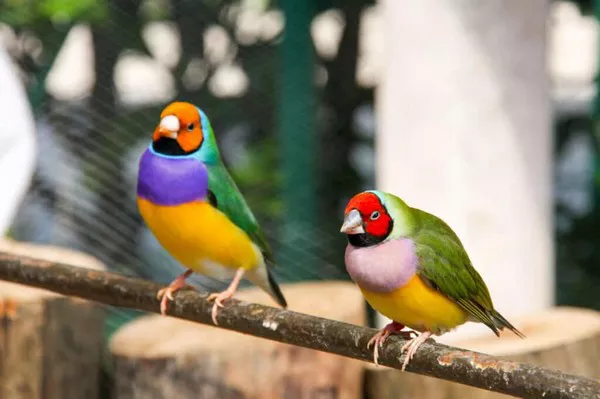The Egyptian Mau is a unique and captivating breed known for its striking appearance and playful personality. Originating from Egypt, these cats are one of the few naturally spotted breeds, possessing an enchanting history intertwined with ancient culture. Understanding the size and growth patterns of the Egyptian Mau is essential for potential owners and feline enthusiasts alike. This article delves into the factors influencing the size of Egyptian Maus, their physical characteristics, growth stages, and general care, ensuring a comprehensive understanding of this remarkable breed.
Origins of the Egyptian Mau
To appreciate the size of the Egyptian Mau, it’s essential to explore its origins. Believed to date back to ancient Egypt, the Mau is often depicted in hieroglyphics and paintings alongside pharaohs and gods. The breed is closely associated with the worship of cats in Egyptian culture, symbolizing grace, mystery, and protection. These historical roots contribute to the breed’s allure and appeal, further highlighting the importance of understanding its characteristics, including size.
Physical Characteristics
Size and Weight
Egyptian Maus are medium-sized cats, with a well-proportioned, muscular build. Adult males typically weigh between 10 to 15 pounds (4.5 to 6.8 kg), while females are slightly smaller, ranging from 6 to 10 pounds (2.7 to 4.5 kg). Their size can vary based on genetics, diet, and overall health.
Height
In terms of height, Egyptian Maus usually stand about 8 to 10 inches (20 to 25 cm) at the shoulder. Their athletic physique enables them to be agile and graceful, traits that are particularly evident in their ability to leap and climb.
Body Structure
Egyptian Maus have a unique structure that contributes to their appearance. They possess a medium-length body with a firm, muscular build. Their legs are proportionate, with slightly longer hind legs that enhance their jumping capabilities. The tail is medium in length, tapering to a point, which adds to their overall elegance.
Coat and Color
The coat of the Egyptian Mau is one of its most distinctive features. It is short, soft, and has a unique spotted pattern. The spots are randomly distributed, resembling those of a wild cat, which is a characteristic that distinguishes them from other domestic breeds. Common colors include silver, bronze, and smoke, each with its own variations of spotting.
Growth Stages of the Egyptian Mau
Understanding the growth stages of an Egyptian Mau can help owners provide appropriate care throughout the cat’s life.
Kitten Stage (0-6 Months)
During the kitten stage, Egyptian Maus grow rapidly. At birth, they typically weigh around 3 to 4 ounces (85 to 113 grams). By six months, males can weigh between 5 to 8 pounds (2.3 to 3.6 kg), while females may reach 4 to 6 pounds (1.8 to 2.7 kg). Kittens are highly energetic, playful, and curious, requiring ample stimulation and socialization.
Adolescent Stage (6 Months – 1 Year)
As Egyptian Maus enter adolescence, their growth slows but continues. By one year, males may weigh between 9 to 12 pounds (4.1 to 5.4 kg) and females around 6 to 9 pounds (2.7 to 4.1 kg). This stage is marked by increased independence, and social behaviors begin to develop further. Owners should encourage play and provide interactive toys to keep their young cats engaged.
Adult Stage (1-3 Years)
By the age of one, Egyptian Maus reach their adult size, but they may continue to fill out until about three years of age. Males typically reach their maximum weight of 10 to 15 pounds (4.5 to 6.8 kg), while females stabilize at 6 to 10 pounds (2.7 to 4.5 kg). During this stage, their personalities become more established, and they may exhibit playful yet independent traits.
Senior Stage (3 Years and Older)
In their senior years, Egyptian Maus generally maintain their size, but they may experience changes in metabolism and activity levels. Regular veterinary check-ups become essential to monitor their health and address any age-related concerns.
Factors Influencing Size
Genetics
Genetics play a crucial role in determining the size of Egyptian Maus. Breeding practices and lineage can affect growth rates and final size. Responsible breeders focus on maintaining the breed’s standards, which include size and health.
Nutrition
Proper nutrition is vital for healthy growth and development. A balanced diet tailored to the cat’s age, size, and activity level can influence their overall size. High-quality commercial cat food or a veterinarian-approved homemade diet ensures they receive necessary nutrients, including proteins, fats, vitamins, and minerals.
See Also: Egyptian Mau vs Tabby: What’s the Difference?
Environment and Activity Level
The environment in which an Egyptian Mau lives can also impact its growth. Active play areas and opportunities for exercise encourage healthy muscle development. Cats that are allowed to explore and play outdoors (in a safe manner) may develop stronger physiques compared to those kept primarily indoors.
Health Considerations
Common Health Issues
While the Egyptian Mau is generally healthy, certain breed-specific health issues can arise, potentially affecting their size and well-being. Common conditions include:
Hypertrophic Cardiomyopathy (HCM): A genetic condition affecting heart muscles, leading to potential heart failure.
Respiratory Issues: Due to their short nasal structure, some may experience respiratory problems.
Obesity: Like many domestic cats, Egyptian Maus are susceptible to obesity if overfed or under-exercised, which can lead to other health issues.
Regular Veterinary Care
Regular check-ups and vaccinations are essential for maintaining the health of Egyptian Maus. Owners should discuss any concerns regarding growth or behavior with their veterinarian to address potential issues promptly.
Caring for Your Egyptian Mau
Diet and Nutrition
Feeding an Egyptian Mau a balanced diet is essential for maintaining their health and supporting their growth. Kittens require food formulated for growth, while adult cats benefit from high-quality, protein-rich diets. Portion control and regular feeding schedules can help prevent obesity, which is crucial for their overall well-being.
Exercise and Play
Given their active nature, Egyptian Maus require regular exercise to maintain a healthy weight and muscle tone. Engaging in interactive play with toys, climbing structures, and safe outdoor exploration can provide the necessary stimulation. Playtime not only supports physical health but also enhances the bond between the cat and its owner.
Socialization and Mental Stimulation
Socialization is vital during the kitten stage. Exposing them to various people, animals, and environments helps develop a well-adjusted adult cat. Mental stimulation is equally important; puzzle toys, interactive games, and training sessions can prevent boredom and reduce behavioral issues.
Conclusion
In summary, Egyptian Maus are medium-sized, athletic cats with a unique blend of beauty and personality. Their size typically ranges from 6 to 15 pounds, influenced by genetics, nutrition, and environmental factors. Understanding their growth stages and providing appropriate care is essential for fostering a healthy, happy feline companion. By prioritizing their nutritional needs, exercise, and regular veterinary care, owners can ensure their Egyptian Mau thrives, showcasing the captivating qualities that make this breed so special.
Whether you’re considering bringing an Egyptian Mau into your home or simply want to learn more about this remarkable breed, understanding their size and care requirements is the first step in fostering a fulfilling relationship with these enchanting cats.
Related Topics:


























